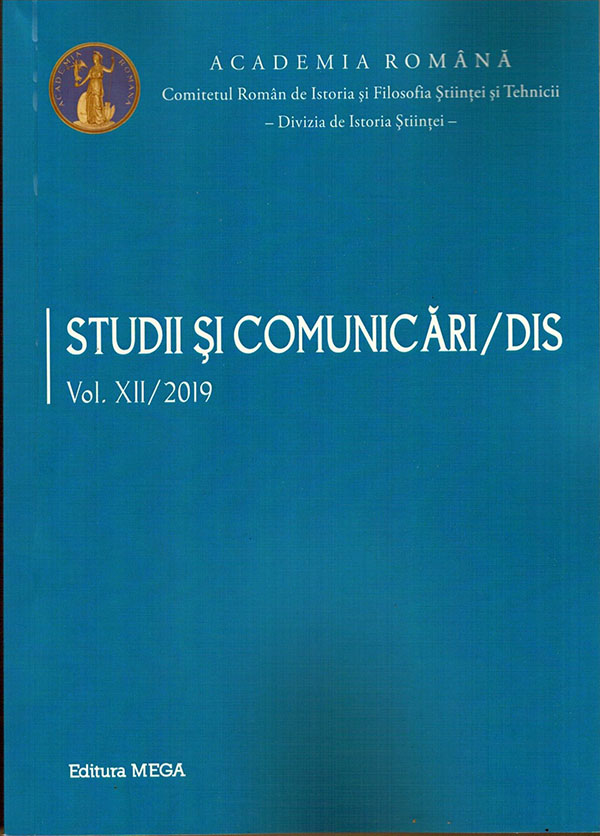Profesorul univ. dr. general de corp de armată (r) Gavrilescu Constantin (1856–1941), personalitate marcantă a medicinii veterinare militare și civile
Army General Gavrilescu Constantin (1856-1941), an outstanding personality of military and civilian veterinary medicine
Author(s): Dumitru Curcă Subject(s): Military history, Recent History (1900 till today), Pre-WW I & WW I (1900 -1919), Interwar Period (1920 - 1939)
Published by: Editura Mega Print SRL
Keywords: Professor Constantin Gavrilescu; veterinary medicine; histology, histology microscopic exercises; topographic anatomy;
Summary/Abstract: In over 30 years of military career, General Alexandru Ioaniţiu was among the thinkers, organizers and senior elite of the Romanian Armed Forces. He was also noted as a military thinker, bringing, through his work – a considerable contribution to the development of military science. His work includes studies of history and military theory, strategy and tactics. Through them, he advanced a series of valuable ideas and conclusions about the necessity ofdeveloping a national military doctrine and adapting the military to progress, to the physiognomy of future war and to the role of the morale factor in winning. He was Chief of the General Staff between September 6, 1940 – June 21, 1940, and of the General Headquarters from June 22 to September 17, 1941.This article aims to highlightsome personal and professional aspects, as well as aspects regarding the contribution made by General Alexandru Ioaniţiu to the consolidation of military science.The article presents the contribution of PhD Professor(r) Colonel Constantin Gavrilescu (1856–1941), outstanding personality of military and civilian veterinary medicine. Among the positions held, we mention: aid of the Head of the Sanitary Service of the Ministry of the Interior; substitute professor at the Department of General Anatomy, Histology, Descriptive and Comparative Anatomy of Domestic Animals and Teratology; a professor at the Cavalry School, as well as the Artillery and Genius Schools. C. Gavrilescu participated in the first Congress of the Romanian Sanitary Corps in October 1884, being one of the secretaries of the veterinary section. Under the chairmanship of Dr. Victor Babeș, he was part of the commission made up of veterinarians: Constantin Gavrilescu, Constantin Starcovici and N. Mihăilescu, to carry out research to determine the cause of the cattle disease, as well as to establish prevention and control measures.On this occasion, the pathogen of the disease was identified, an endoglobular parasite, coined ‘hematococcus’ by Victor Babeș, which was later referred to as ‘Babesia’, and the diseases caused are called ‘Babesioses’. In 1913, C. Gavrilescu participated in the military campaign led by the Kingdom of Romania in Bulgaria, having the rank of Veterinary Colonel and Chief of the Veterinary Service of the 2nd Army Corps, with duties of leading the service and supervision of the Military Veterinary Staff. After Romania’s entry into war with the Entente, in 1916, C. Gavrilescu was appointed Chief of the Central Military Veterinary Hospital, organizing its evacuation to Moldova, then on February 22, 1919 the Hospital was relocated to Bucharest. As a Comparative, Descriptive and Topographic Anatomy professor, C. Gavrilescu organized the anatomy course and inaugurated the practical course of dissection; he also inaugurated histology and histology with microscopic exercises; he founded Comparative Anatomy in our country, succeeding in linking the anatomy with the clinic. For his conscientiousness in the service, for the work he has done and his merits, Professor C. Gavrilescu was awarded many Romanian decorations, including the Order of “Romania’s crown in commander grade”. He passed away on March 9, 1941, being buried in the Bellu Orthodox Cemetery.
Journal: STUDII ȘI COMUNICĂRI/DIS
- Issue Year: 2019
- Issue No: 12
- Page Range: 217-242
- Page Count: 26
- Language: Romanian

